Cranes in demolition: developing deconstruction
01 February 2021
Demolition work traditionally involves cranes but there has been a shift in the choice of equipment, the methods are changing and there is clear potential for growth. Alex Dahm reports
Work to demolish redundant buildings and other structures often involves cranes to some degree but their importance in the industry is increasing and may well be on the cusp of explosive growth.
Mobile cranes are widely used, including for ancillary tasks such as carrying large curtains hanging between the work and a public area, to help control dust and keep debris on site. Rather than simply knocking things down, many of today’s demolition projects might better be described as deconstruction or dismantling operations. This type of work often requires a more delicate approach and is ideal for cranes.
Before we get into that, the traditional demolition application of a crawler crane with a wrecking ball might be relatively uncommon but it can still be chosen the best solution. A recent project in the USA saw Veit & Company hired as the subcontractor for the demolition and abatement of a 13 storey dormitory building at Marquette University in the heart of the campus in Milwaukee, Wisconsin. This 54-year-old building with its curved façade housed 725 beds and was referred to as “the beer can” by generations of Marquette students.
Veit & Company said ball and crane was brought back to demolish the superstructure. “Some would say this is a forgotten art in the demolition industry, but it was required for this type of complex project. Balling down the structure while keeping the public and university students safe took precision and long hours of work,” the company says. Veit’s crane was swinging an 8,500 pound (3.9 tonne) wrecking ball and the company said it achieved a 91 % recycle rate.
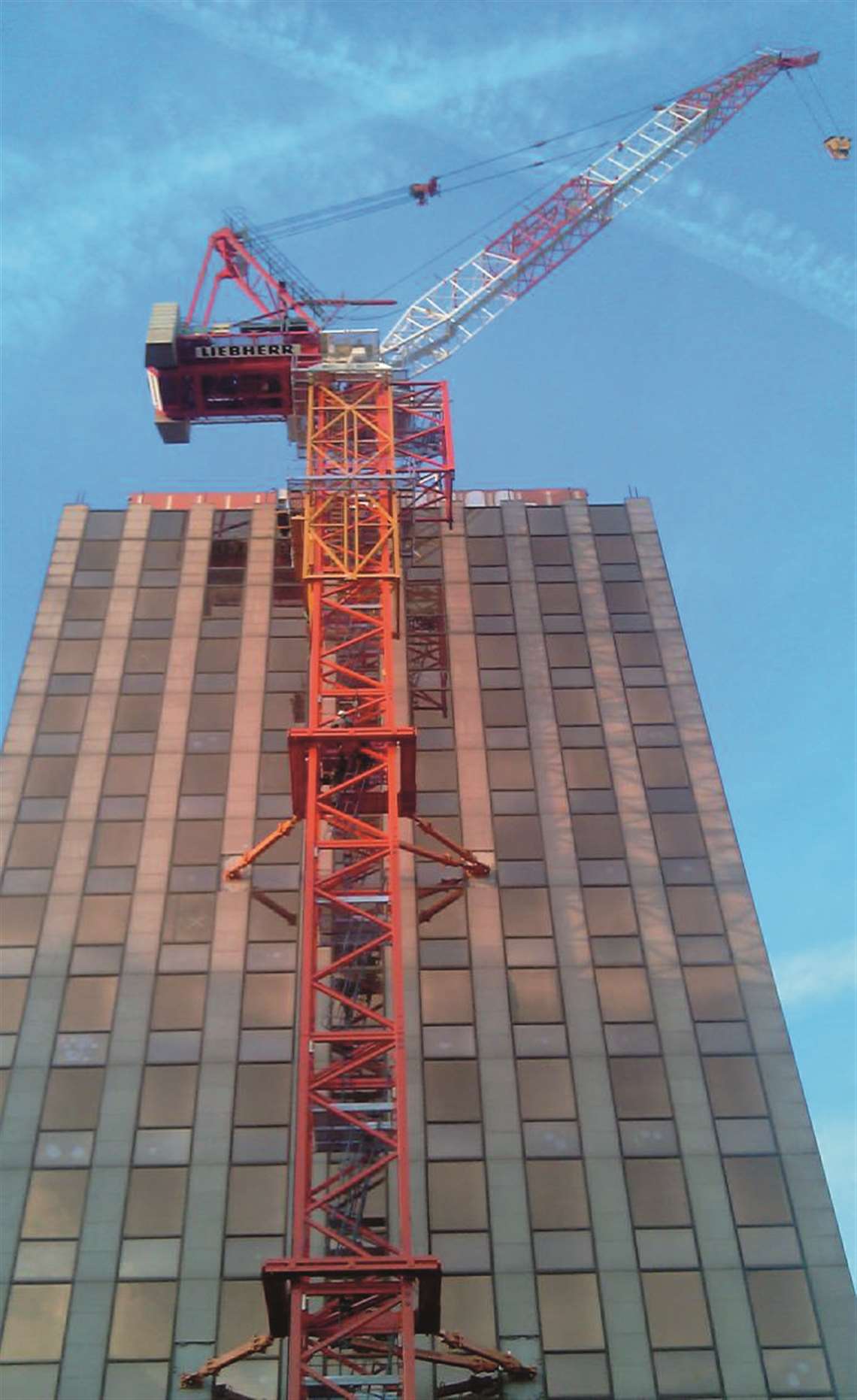 Veit & Company was subcontracted for the demolition and abatement of a 13 storey dormitory building at Marquette University in Wisconsin, USA
Veit & Company was subcontracted for the demolition and abatement of a 13 storey dormitory building at Marquette University in Wisconsin, USA
Crane style
Where demolition is more of a dismantling operation crane rental specialist BKL said it works closely with well-known demolition contractors in Germany. The company says its wheeled mobile cranes are often hired to hold demolition curtains and to lift and remove components, for example, aircon units, before starting the demolition proper.
Its wheeled mobile and tower cranes are used in the dismantling of steel buildings and old industrial plants where many parts have to be lifted, BKL explains. Both crane types are also used on the support side, for example removing masonry and other rubble from courtyards and other similarly inaccessible places, using skips. Use of tower cranes, wheeled mobile and mobile folding construction cranes for demolition work, specifically to lift permanently connected parts is prohibited, BKL says.
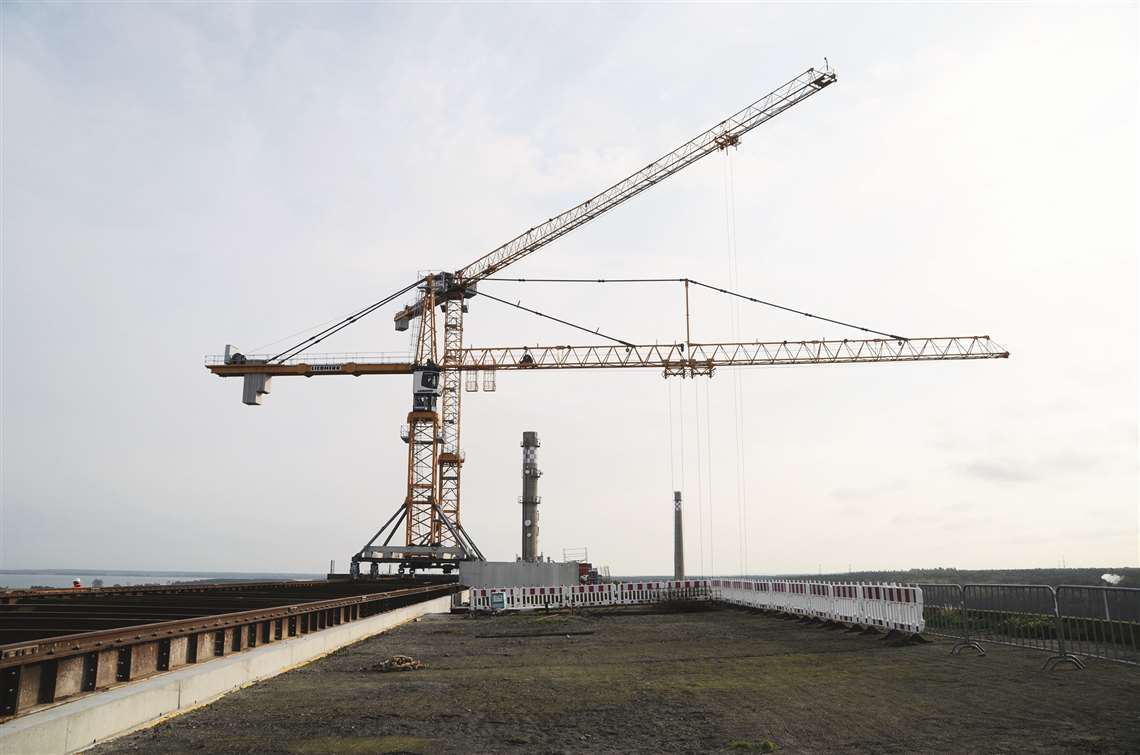 BKL’s fleet includes more than 500 tower cranes, plus more than 100 all terrain mobile cranes up to 650 tonnes. Here a pair of Liebherr towers is dismantling an old power station. Also on video: www.youtube.com/watch?v=FPHozsdG90I
BKL’s fleet includes more than 500 tower cranes, plus more than 100 all terrain mobile cranes up to 650 tonnes. Here a pair of Liebherr towers is dismantling an old power station. Also on video: www.youtube.com/watch?v=FPHozsdG90I
Congested and already built-up urban sites mean neighbouring buildings are often too close for explosive demolition or other similarly disruptive methods. Tower cranes are a widely used solution in these situations and it is a growth area of application.
Special consideration needs to be given when using tower cranes (and other types) in this application. As a manufacturer of tower cranes used in demolition, Liebherr prohibits lifting loads of unknown weight, for example, filling skips while they are suspended from the hook. Instead the skip should be filled on the ground and the crane can then attempt to lift it and see if it is within capacity.
Dynamic forces must be avoided, for example, pulling fixed loads, sudden release of a load and pulling diagonally or dragging. Liebherr also cautions that tower cranes are not designed for lifting people. In some areas, however, local regulations allow transport of people with cranes under special circumstances and risk assessment.
When planning the installation, if the tower crane has to be fixed to the building, then its ties need to be protected from falling demolition waste. Its base also needs to be suitably arranged to remain unaffected by the demolition work.
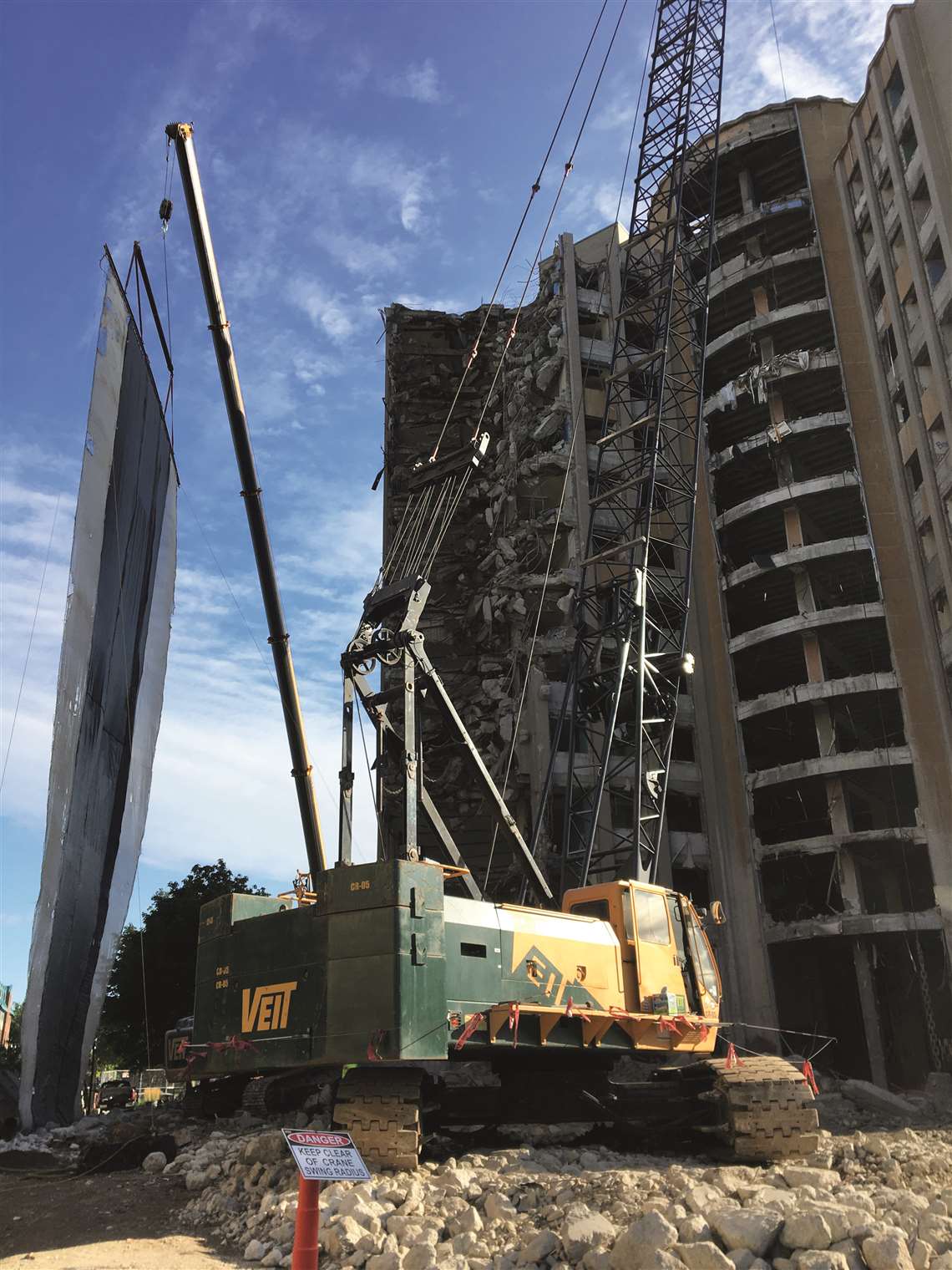 To dismantle the UAP tower in Lyon, France, contractor DESPE chose a Liebherr tower crane type 355 HC-L 16/32. Over six months 27,650 tonnes of waste was removed, one floor a week
To dismantle the UAP tower in Lyon, France, contractor DESPE chose a Liebherr tower crane type 355 HC-L 16/32. Over six months 27,650 tonnes of waste was removed, one floor a week
Wind work
Significant growth will soon be seen in wind energy. A large number of old wind turbines are beginning to reach the end of their design life and need to be dismantled and removed, often to be replaced with new ones.
The German wind energy industry will face a dismantling wave from the beginning of 2021. That is according to RDRWind, the industrial association for repowering, dismantling and recycling of wind turbines. It was founded in Hannover in 2018 with the aim of establishing first-time industry standards as best practice for dismantling. A consortium of 25 companies, it includes experts from the wind industry, recycling experts, scientists and officials of authorities, such as the Federal Environment Agency.
Around 30,000 wind turbines are operating in Germany and every second one of them will approach the end of their life in the next ten years, RDRWind says. That means they have either come to the end of their service life or continued operation is no longer economical.
At the turn of the year 2020-2021, more than 5,200 wind turbines in Germany will reach the end of their 20-year feed-in tariff support under the Renewable Energy Sources Act (EEG), with a further 8,000 to follow by the end of 2025. Even if there are far fewer in other countries it should still translate into a useful amount of crane work.
To help manage dismantling and recycling of wind turbines in a safe, reliable and professional manner, a uniform standard has been published for the first time. On 17 July 2020 the German Institute for Standardization published what it says should be considered the industry standard, according to RDRWind, for dismantling and recycling wind turbines.
DIN SPEC 4866, titled Sustainable Dismantling, Disassembly, Recycling and Recovery of Wind Turbines, is a 26-page document stipulating framework conditions for the entire dismantling process from planning, via the actual dismantling, through to documentation. It is available free of charge in German and English via DIN standards publisher Beuth Verlag at: www.beuth.de/de/technische-regel/din-spec-4866/326469199
Its recommendations will help operators and specialized companies plan and carry out dismantling projects. Operators of wind farms, crane companies, demolition and recycling specialists, will be able to agree and follow a standardised procedure. More information on dismantling wind turbines is at: www.rdrwind.de/english-information
|
Breaking the Bank German tower crane manufacturer and rental company Wilbert employs its tower cranes for deconstruction work. Early in 2020 Wilbert was instrumental in a project to demolish the Deutsche Bank Investment Banking Center (IBCF) in Frankfurt am Main. It stood nearly 100 metres tall and had a seven-storey side wing. 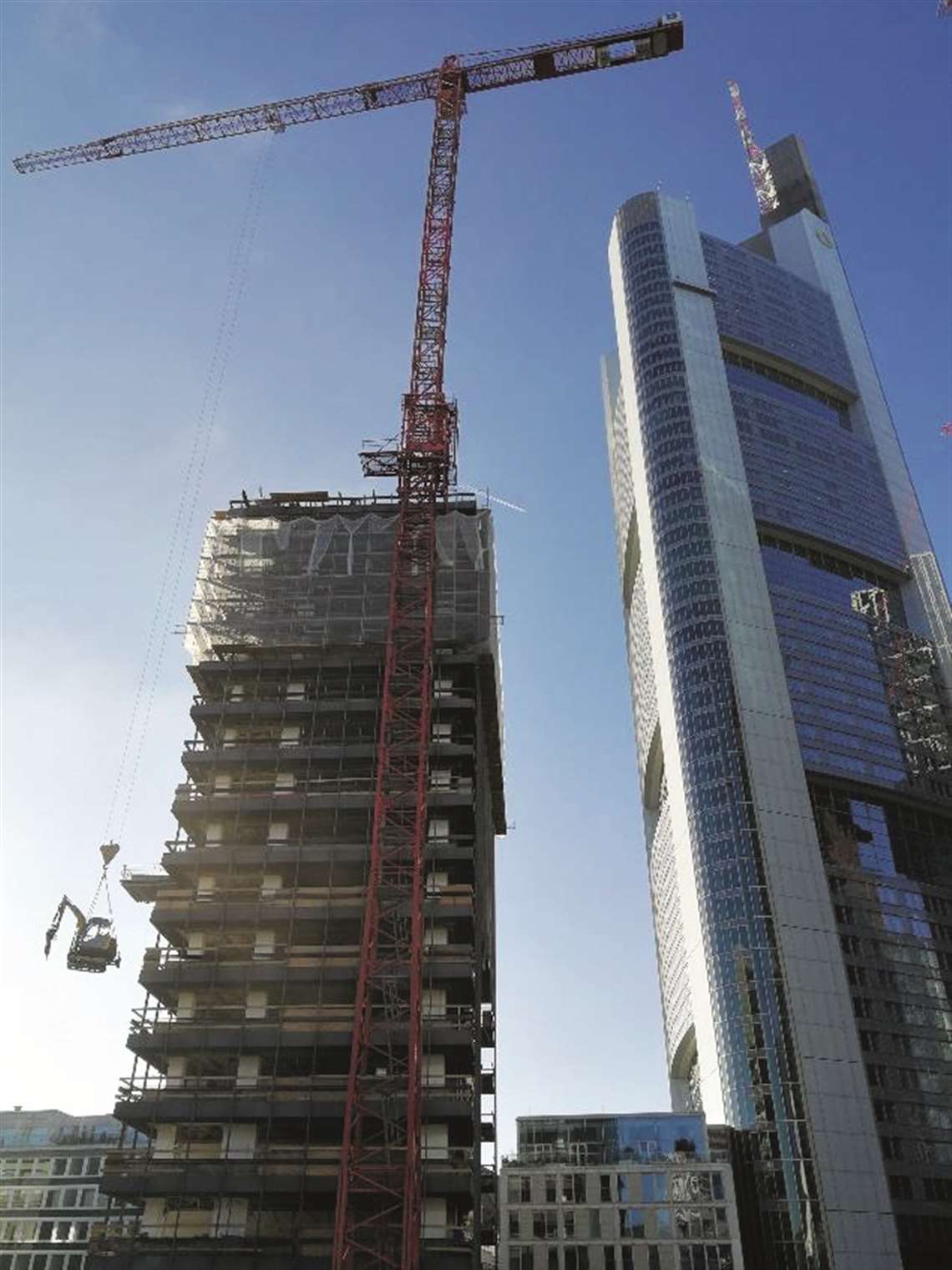 The Deutsche Bank Frankfurt demolition job with Wilbert tower cranes The Deutsche Bank Frankfurt demolition job with Wilbert tower cranes
Deutsche Bank sold the building and others adjoining it for redevelopment. Preparations began for a new four-tower high-rise complex called FOUR, to be completed in 2023. First of all the old building had to be removed. The process was to gut the old buildings before deconstruction, removing and separating the different materials before disposal, recycling or other further processing. It was important for the crane to be able to work freestanding, for obvious reasons. High load capacity was also necessary. Wilbert chose a WT 420 e.tronic flat top for the job. At a freestanding height of 103.6 metres the crane could lift 8 tonnes at the end of its 45 metre jib. Several elements were combined to achieve the freestanding height, starting with a 12 x 12 metre cross frame and 3.33 x 3.33 metre base element. A 500 tonne wheeled mobile crane was used for the basic assembly, after which the crane was climbed (jumped) to its final height. As the building came down, in the second phase, the crane was reduced to a height of 63 metres. As is the opposite to a construction project, at the end of a demolition job the tower crane itself is often easier to dismantle and remove. |
|
Wind turbine dismantling by Ainscough and Keltbray It is not just old age that puts an end to wind turbines. Ainscough Crane Hire in the UK was recently contracted to remove the nacelle of a turbine damaged in a fire. 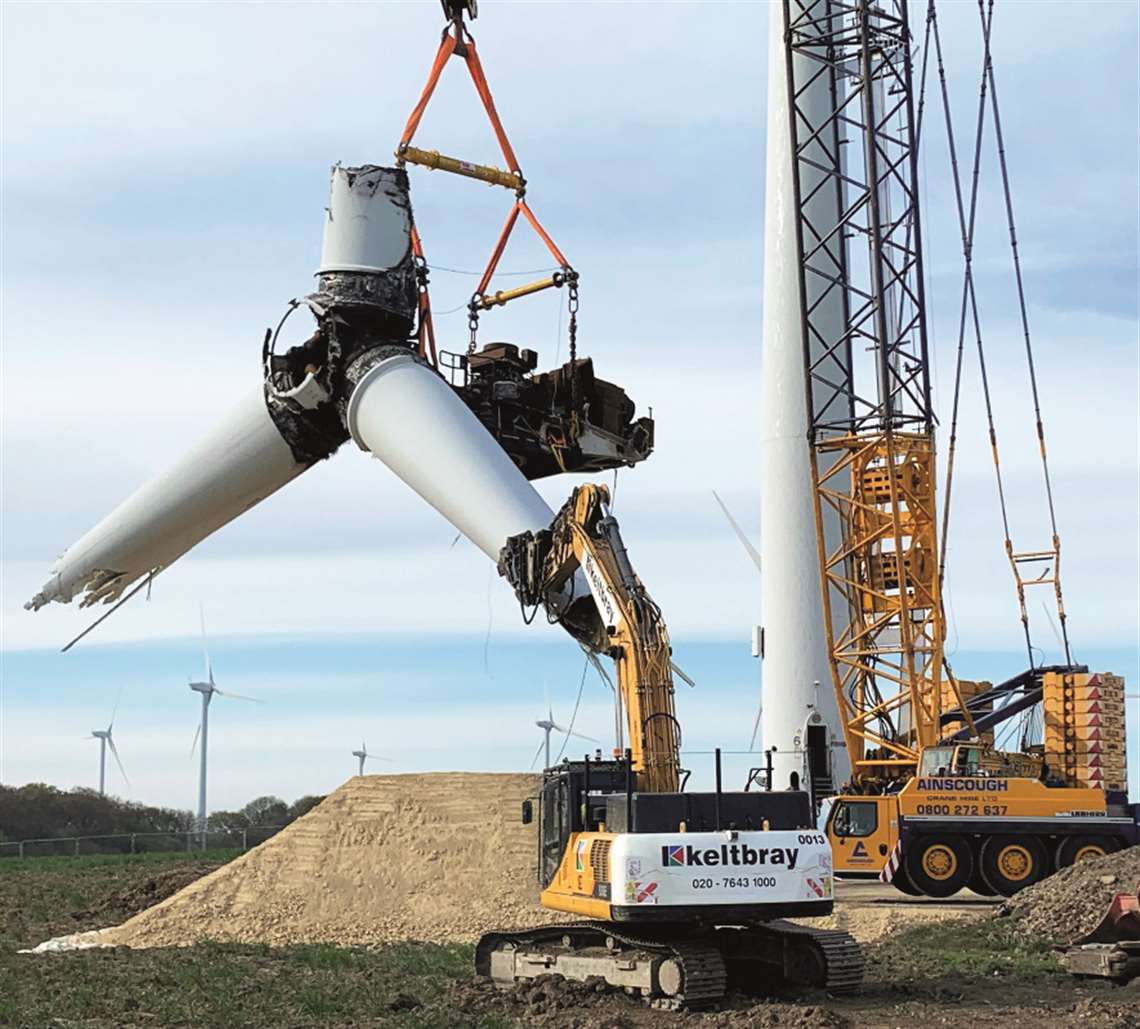
Keltbray Lifting Services, with Keltbray Decommissioning, and Wentworth House Partnership employed Ainscough on behalf of energy company client EDF. It was at the Walkway Wind Farm at Billingham in the North of England. Keltbray worked to develop the safest method of lifting the nacelle. A bespoke lifting beam with slings was designed, fabricated and installed. The nacelle was lifted in a four-point lift from the beam and the rotor. Ainscough chose to use a Demag TC 2800 lattice jib truck crane for the main lift and a 450 tonne wheeled mobile telescopic crane to give access for the rigging team. Ainscough set the cranes up on site and the nacelle was landed on a reconstructed pad. |
STAY CONNECTED


Receive the information you need when you need it through our world-leading magazines, newsletters and daily briefings.




